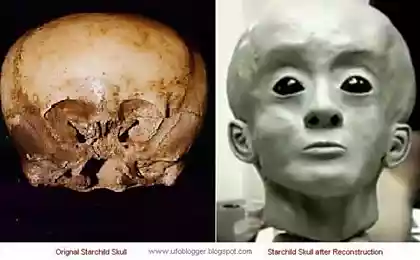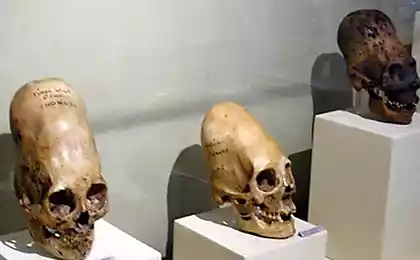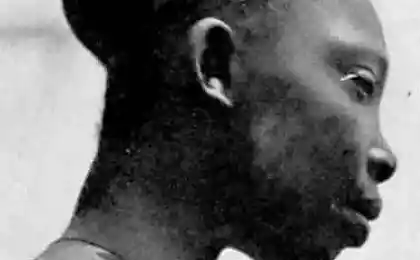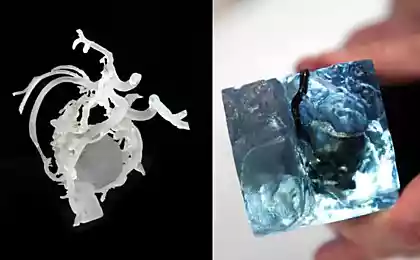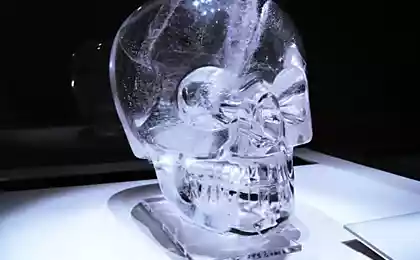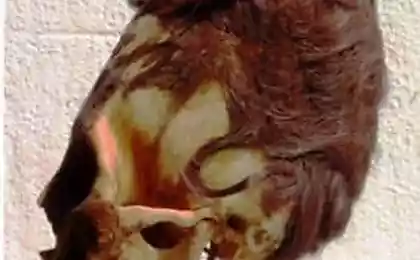514
Why six thousand years ago, surgeons were doing trepanation
Russian archaeologists found in the North Caucasus ancient burials in which people were buried, and subjected to craniotomy. According to the researchers, these complex operations was done — and successfully — more than 6 thousand years ago, in the Eneolithic and bronze, when not only did not exist steel scalpels, but is believed to be the notion about medicine was quite different than today. Who and what carried out such a complex surgical intervention?
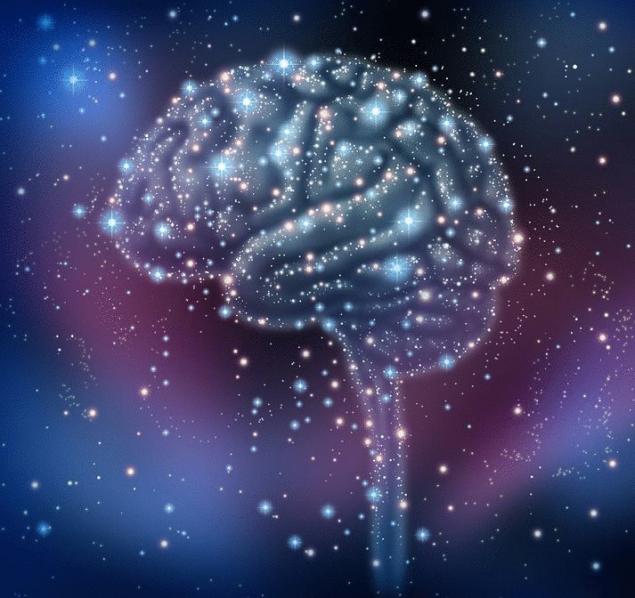
With a hole in the head
Skull four with characteristic holes found by the archaeologists of the expedition GUP Nasledie Stavropol region in the four burial grounds in the framework of the joint Russian-German project to study the peoples of the Caucasus in the bronze age. Alas, the authentic names of these peoples is unknown. They had no written language, and the neighbors almost not retained them in their memory. It is only known that the basis of their economy was agriculture and animal husbandry, hunting and gathering. The welfare of the population, and often his survival depended on the vagaries of the climate. And here on the cranium of the typical representatives of this culture find the traces of a complicated operation. The fact itself is amazing.
The find was studied by the Department, Institute and Museum of anthropology of Moscow state University Natalia Berezina. "Additional holes in the skull can occur for several reasons, says researcher as the result of an infectious process, malignancy, genetic abnormalities, and injury." In this case, none of the reasons did not fit. "Infectious process and malignancy have a fairly distinctive shape and bony reaction in place of the hole — continues anthropologist. — Genetic abnormalities, usually very well localized. After the injury on the skull are characteristic fragments of cracking. In this case, nothing like that, and there are smooth, neat holes". And in all four cases, they were located approximately on the same area of the skull sagittal suture between left and right parietal bones. Plot of land for the operation was chosen, according to modern experts, not the easiest and safe. "In the region of the sagittal suture very close to the bone to fit the powerful currents of the blood vessels, — said Natalia Berezina. — If the offending vessel to stop the bleeding virtually impossible." That is, the slightest mistake of the surgeon and the patient would die from a brain hemorrhage. Scientists were surprised that three of the four people involved in complex operations, survived, and the two then lived for a long time and died not from trepanation and possible complications. Thus, during the operation or soon after it died only male 40-49 years. Another woman, whose age scientists estimated 25-39 years old I underwent an operation and lived for at least another week. Two men after the surgery, could live years, as indicated by the degree of bone healing.
After examining the holes under the microscope, an anthropologist Berezina were able to describe how they were made. All turtle traces of the grooves made in the beginning of the operation, while scalping. Further traces of knife was observed in the bone of the skull. As suggested by the anthropologist, the incisions made in the direction from front to back, with clearly visible traces entry and exit of the knife from the bone. The skull, as the study shows, cut along the arc with the two sides until, until it got to the hard shell of the brain. This was done with very sharp tools — knife from silica or obsidian, because at that time, which scientists have attributed the remains, there was no steel, but even iron. In the courtyard stood the bronze age, the V Millennium BC, but bronze as the material is too soft not suitable for such operations.
Impressive the size of the holes. They each individual was different, but the average is 30 to 40 millimeters, which is comparable to the size of the passport photo. And two turtles found traces of two holes made almost simultaneously. And one, believed to be the main, was approximately two to three times greater than the second. Judging by the complexity of the operations and their success, they were outstanding. "We should not underestimate the skills and expertise of the surgeons of that time," says the leading researcher of the Institute of archaeology RAS, doctor of historical Sciences Maria Mednikova.
In addition, it is possible that the ancient people were much hardier us and trepanation at all to do them without the use of anesthesia. As said Natalia Berezina, Treponema could relate, it is particularly noted that this operation is not as painful as it may seem: "the Pain only occurs when scalping, the cutting of the skin and in the brain nerve endings that transmit pain, no." It is possible that the operations used local antiseptics — various resins, ash, and plants.
Apparently, people consciously chose to manipulate it with the head. But for what purpose?
Connected
Natalia Berezina says that the holes were not cut due to injury or disease, such as hypertension. "Specific marks, which can be interpreted as traces of high pressure on the studied turtles were found", — confidently said the anthropologist. In addition, at that time there was no x-ray or scanners that would help to diagnose tumors. It turns out that medical indications for autopsy the skulls were not. Berezina with care involves a ritual trepanation. Relative to the sacral meaning of this action there are several assumptions.
Noted a hole in the head people can be Ministers of certain cults, and the trace of the surgery showed that they belong to a special class. "Subconsciously, people in ancient times tried to put their anatomy on the structure of the universe, — says Maria Mednikova. And when people had something to do with your own body, they believed that changing the world around them and create a new entity. For example, in many cultures the sky was directly linked to the head. Changing it, they showed thereby that affect the main thing — the sky, which they presented most mysteries, troubles and at the same time is good."
However, in ancient times it was not enough to change your appearance so people began to consider the other person. Had to stand out behavior, ability to enter into a special state, to communicate with higher powers — to be the liaison between heaven and earth. Ritual and prayerful appeal to the spirits was available favorites, possessing the ability to adjust the emotional state of the participants of the ceremony. But these rites demanded of people conducting their special "transformations." Historians are well-known cases of the use of various psychotropic substances, mushrooms, herbs and infusions. It is possible that the craniotomy was standing in line with similar practices of altering consciousness. And experts do not deny that it could affect not only the image of a person, but his inner world, changing the mentality.
According to the doctor-the neurosurgeon of the City clinical hospital named after S. P. Botkin Yuri Soshina, "the effect of the trepanation can be epilepsy, which in complex forms sometimes causes hallucinations." Today, epilepsy is considered a dangerous disease, and ancient people people suffering from it were considered God's chosen. Many believe that in fits selected is able to communicate with the spirits and heaven. It is possible that on the territory of modern Stavropol territory once lived people who believed in this election.
Maria Mednikova believes that the practice of trepanation went once just after observing the people who on their own traumatic brain injury, provoking a change of consciousness and human behavior. This was seen as examples of "divine madness", so important in religious and magical rites. Later, people began to deliberately perform operations to facilitate the emergence of new properties and qualities in healthy, but chosen for specific magical practices. It remains only to guess what conditions could the election of a person to conduct trephination. Perhaps it was the representatives of particular classes or families carrying on such an important role of priests in ancient tribes.
For sure one thing is clear: the ancient physicians, on which no information, knew how to change mentality when carrying out these complex operations, and did it so skillfully that some modern surgeons affected by this skill.
Maria Dobrovol'skI, doctor of historical Sciences, leading researcher of the Institute of archaeology of the Russian Academy of Sciences:
— The earliest such operations are known since the stone age, that is, they were conducted more than 20 thousand years ago, during the ice age. In the subsequent practice of trepanning has also been widely distributed — for example, in the Mesolithic in the Dnieper, Western Europe, the Balkans. Overall this is a great human tradition. There is a universal archetype of trepanning. The need to conduct such operations occurred irrespective of the territory and culture. As for their goals, about this being a very broad and diverse discussion.
Yourself trepanation are different. For example, closed just leaving a trace on the skull. In this case, was removed only the upper part of the bone, which may be used as an amulet. It is thus noted some familiar remarkable person. Some of trepanation was used with medical purposes, but in ancient times, when doctoring a scientific and practical aspects were very closely connected with cult practice, with the influence of divine forces on human health. So it is very difficult to clearly define in the discussion, what was done trepanation in religious or medicinal purposes.
Kathleen Taylor, a researcher of the Department of physiology, anatomy and genetics, University of Oxford, fellow of the Institute of food, brain and behaviour:
— Since the time of Hippocrates did do trepanation for patients with mental illness. For example, to remove the so-called evil spirit in patients with convulsive syndrome. If the person suffered from the syndrome of epilepsy, it was considered that the reason is inside it, especially in the head. Such an operation can affect the psyche. There is even such a thing as disease trepan. If the defect is large, then there is the influence of atmospheric pressure as the inside of the skull.
In the norm it depends on the position of the body, but kompensiruet due to the blood flow, the so-called compliance of the brain — intracranial compliance changes. In trepanation — the outside influence — compliance changes. You may experience the so-called adhesion processes — the formation of coarse connective tissue scar. This is manifested in the violation of the self-esteem of a person, the occurrence of headaches, meteozavisimosti, the mood changes.published
Author: Vladimir Kryuchkov
P. S. And remember, just changing your mind — together we change the world! ©
Source: www.itogi.ru/paradox/2013/38/194211.html

With a hole in the head
Skull four with characteristic holes found by the archaeologists of the expedition GUP Nasledie Stavropol region in the four burial grounds in the framework of the joint Russian-German project to study the peoples of the Caucasus in the bronze age. Alas, the authentic names of these peoples is unknown. They had no written language, and the neighbors almost not retained them in their memory. It is only known that the basis of their economy was agriculture and animal husbandry, hunting and gathering. The welfare of the population, and often his survival depended on the vagaries of the climate. And here on the cranium of the typical representatives of this culture find the traces of a complicated operation. The fact itself is amazing.
The find was studied by the Department, Institute and Museum of anthropology of Moscow state University Natalia Berezina. "Additional holes in the skull can occur for several reasons, says researcher as the result of an infectious process, malignancy, genetic abnormalities, and injury." In this case, none of the reasons did not fit. "Infectious process and malignancy have a fairly distinctive shape and bony reaction in place of the hole — continues anthropologist. — Genetic abnormalities, usually very well localized. After the injury on the skull are characteristic fragments of cracking. In this case, nothing like that, and there are smooth, neat holes". And in all four cases, they were located approximately on the same area of the skull sagittal suture between left and right parietal bones. Plot of land for the operation was chosen, according to modern experts, not the easiest and safe. "In the region of the sagittal suture very close to the bone to fit the powerful currents of the blood vessels, — said Natalia Berezina. — If the offending vessel to stop the bleeding virtually impossible." That is, the slightest mistake of the surgeon and the patient would die from a brain hemorrhage. Scientists were surprised that three of the four people involved in complex operations, survived, and the two then lived for a long time and died not from trepanation and possible complications. Thus, during the operation or soon after it died only male 40-49 years. Another woman, whose age scientists estimated 25-39 years old I underwent an operation and lived for at least another week. Two men after the surgery, could live years, as indicated by the degree of bone healing.
After examining the holes under the microscope, an anthropologist Berezina were able to describe how they were made. All turtle traces of the grooves made in the beginning of the operation, while scalping. Further traces of knife was observed in the bone of the skull. As suggested by the anthropologist, the incisions made in the direction from front to back, with clearly visible traces entry and exit of the knife from the bone. The skull, as the study shows, cut along the arc with the two sides until, until it got to the hard shell of the brain. This was done with very sharp tools — knife from silica or obsidian, because at that time, which scientists have attributed the remains, there was no steel, but even iron. In the courtyard stood the bronze age, the V Millennium BC, but bronze as the material is too soft not suitable for such operations.
Impressive the size of the holes. They each individual was different, but the average is 30 to 40 millimeters, which is comparable to the size of the passport photo. And two turtles found traces of two holes made almost simultaneously. And one, believed to be the main, was approximately two to three times greater than the second. Judging by the complexity of the operations and their success, they were outstanding. "We should not underestimate the skills and expertise of the surgeons of that time," says the leading researcher of the Institute of archaeology RAS, doctor of historical Sciences Maria Mednikova.
In addition, it is possible that the ancient people were much hardier us and trepanation at all to do them without the use of anesthesia. As said Natalia Berezina, Treponema could relate, it is particularly noted that this operation is not as painful as it may seem: "the Pain only occurs when scalping, the cutting of the skin and in the brain nerve endings that transmit pain, no." It is possible that the operations used local antiseptics — various resins, ash, and plants.
Apparently, people consciously chose to manipulate it with the head. But for what purpose?
Connected
Natalia Berezina says that the holes were not cut due to injury or disease, such as hypertension. "Specific marks, which can be interpreted as traces of high pressure on the studied turtles were found", — confidently said the anthropologist. In addition, at that time there was no x-ray or scanners that would help to diagnose tumors. It turns out that medical indications for autopsy the skulls were not. Berezina with care involves a ritual trepanation. Relative to the sacral meaning of this action there are several assumptions.
Noted a hole in the head people can be Ministers of certain cults, and the trace of the surgery showed that they belong to a special class. "Subconsciously, people in ancient times tried to put their anatomy on the structure of the universe, — says Maria Mednikova. And when people had something to do with your own body, they believed that changing the world around them and create a new entity. For example, in many cultures the sky was directly linked to the head. Changing it, they showed thereby that affect the main thing — the sky, which they presented most mysteries, troubles and at the same time is good."
However, in ancient times it was not enough to change your appearance so people began to consider the other person. Had to stand out behavior, ability to enter into a special state, to communicate with higher powers — to be the liaison between heaven and earth. Ritual and prayerful appeal to the spirits was available favorites, possessing the ability to adjust the emotional state of the participants of the ceremony. But these rites demanded of people conducting their special "transformations." Historians are well-known cases of the use of various psychotropic substances, mushrooms, herbs and infusions. It is possible that the craniotomy was standing in line with similar practices of altering consciousness. And experts do not deny that it could affect not only the image of a person, but his inner world, changing the mentality.
According to the doctor-the neurosurgeon of the City clinical hospital named after S. P. Botkin Yuri Soshina, "the effect of the trepanation can be epilepsy, which in complex forms sometimes causes hallucinations." Today, epilepsy is considered a dangerous disease, and ancient people people suffering from it were considered God's chosen. Many believe that in fits selected is able to communicate with the spirits and heaven. It is possible that on the territory of modern Stavropol territory once lived people who believed in this election.
Maria Mednikova believes that the practice of trepanation went once just after observing the people who on their own traumatic brain injury, provoking a change of consciousness and human behavior. This was seen as examples of "divine madness", so important in religious and magical rites. Later, people began to deliberately perform operations to facilitate the emergence of new properties and qualities in healthy, but chosen for specific magical practices. It remains only to guess what conditions could the election of a person to conduct trephination. Perhaps it was the representatives of particular classes or families carrying on such an important role of priests in ancient tribes.
For sure one thing is clear: the ancient physicians, on which no information, knew how to change mentality when carrying out these complex operations, and did it so skillfully that some modern surgeons affected by this skill.
Maria Dobrovol'skI, doctor of historical Sciences, leading researcher of the Institute of archaeology of the Russian Academy of Sciences:
— The earliest such operations are known since the stone age, that is, they were conducted more than 20 thousand years ago, during the ice age. In the subsequent practice of trepanning has also been widely distributed — for example, in the Mesolithic in the Dnieper, Western Europe, the Balkans. Overall this is a great human tradition. There is a universal archetype of trepanning. The need to conduct such operations occurred irrespective of the territory and culture. As for their goals, about this being a very broad and diverse discussion.
Yourself trepanation are different. For example, closed just leaving a trace on the skull. In this case, was removed only the upper part of the bone, which may be used as an amulet. It is thus noted some familiar remarkable person. Some of trepanation was used with medical purposes, but in ancient times, when doctoring a scientific and practical aspects were very closely connected with cult practice, with the influence of divine forces on human health. So it is very difficult to clearly define in the discussion, what was done trepanation in religious or medicinal purposes.
Kathleen Taylor, a researcher of the Department of physiology, anatomy and genetics, University of Oxford, fellow of the Institute of food, brain and behaviour:
— Since the time of Hippocrates did do trepanation for patients with mental illness. For example, to remove the so-called evil spirit in patients with convulsive syndrome. If the person suffered from the syndrome of epilepsy, it was considered that the reason is inside it, especially in the head. Such an operation can affect the psyche. There is even such a thing as disease trepan. If the defect is large, then there is the influence of atmospheric pressure as the inside of the skull.
In the norm it depends on the position of the body, but kompensiruet due to the blood flow, the so-called compliance of the brain — intracranial compliance changes. In trepanation — the outside influence — compliance changes. You may experience the so-called adhesion processes — the formation of coarse connective tissue scar. This is manifested in the violation of the self-esteem of a person, the occurrence of headaches, meteozavisimosti, the mood changes.published
Author: Vladimir Kryuchkov
P. S. And remember, just changing your mind — together we change the world! ©
Source: www.itogi.ru/paradox/2013/38/194211.html

